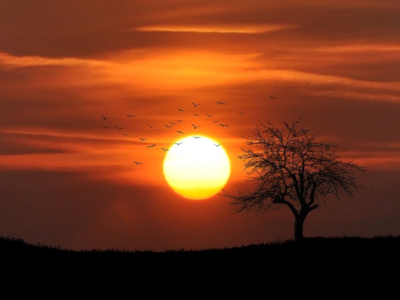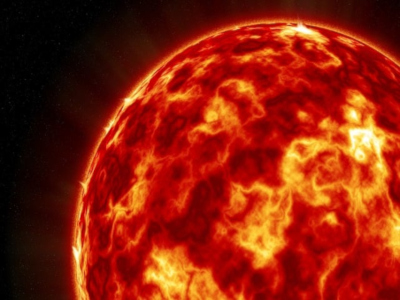The sun’s gravity keeps the entire solar system together, from the smallest particle to the biggest planet, keeping everything in its orbit. Because of the sun, the earth experiences seasons, ocean currents, weather, and many more. This article contains five interesting facts about the sun.
Our sun is a medium-sized star.
Our sun has a radius of approximately 700,000 kilometers. Although much larger stars have been found, the sun is by far more massive than Earth. To match the mass of the sun, it would take at least 330,000 Earths. Additionally, to match the sun’s volume, it would take 1,3 million Earths.

The sun’s surface is not solid.
The sun does not have a solid surface compared to the Moon, Earth, and any other rocky planets. The first layer of the sun is called the photosphere. The word photosphere means “light sphere”, which is given because this is the layer that emits the most visible light. It is what we can see with our eyes on earth. The photosphere is about 400 kilometers thick, and its temperature reaches circa 5.500 degrees Celsius. Most of the sun’s radiation escapes outward from the photosphere into space.

Placement and rotation of the sun
The distance between the sun and earth is about 150 kilometers. The Alpha Centauri triple star system is its nearest neighbor. This star system consists of the red dwarf star Proxima Centauri, which is 4.24 light-years away, and Alpha Centauri A and B, two sunlike stars orbiting each other, which are 4.37 light-years away. A light year is the distance light travels in one year, which equals about 9.5 trillion kilometers.
The Sun is located in the center of the Milky Way, surrounded by planets, asteroids, comets, and other objects in our solar system. Our solar system moves with an average velocity of 720.000 kilometers per hour. Even with this speed, it would take approximately 230 million years for the sun to make one complete trip around the Milky Way.
The sun rotates on its axis as it revolves around the galaxy. Furthermore, the sun’s spin has a tilt of 7.5 degrees. Different parts of the sun rotate at different rates. This happens because the sun is not solid. At the equator, the sun spins around once about every 25 Earth days. At its poles, the sun rotates once on its axis every 36 Earth days.

The sun used to have rings.
According to a new study, the Sun may have been surrounded by giant rings of dust before there were any planets in our solar system. Those rings may have prevented Earth from growing into a “super-Earth,” which is a type of planet that is about twice the size of Earth and up to 10 times its mass, according to NASA. Some of that dust is still around today, in several dust rings that circle the sun. They trace the orbits of planets, whose gravity tugs dust into place around the Sun.
The Sun is 4.5 billion years old.
The sun was made when a spinning nebula of gas and dust collapsed, forming a disk shape. Even though the sun is 4.5 billion years old, it is roughly only halfway through its life cycle. Currently, the sun is in a phase called “yellow dwarf,” which means that it is a medium-sized star. It will take another 5 billion years for the sun to become a big star called a “red giant.” Then, at the end of its lifespan, which is another few billion years, it will shrink to become a small “white dwarf” star.
Sources:
https://science.nasa.gov/sun/
https://science.nasa.gov/sun/facts/
https://www.livescience.com/baby-sun-had-rings-like-saturn
